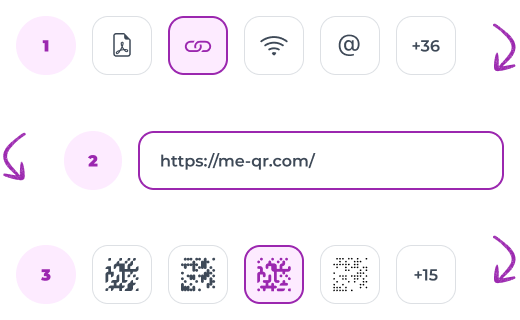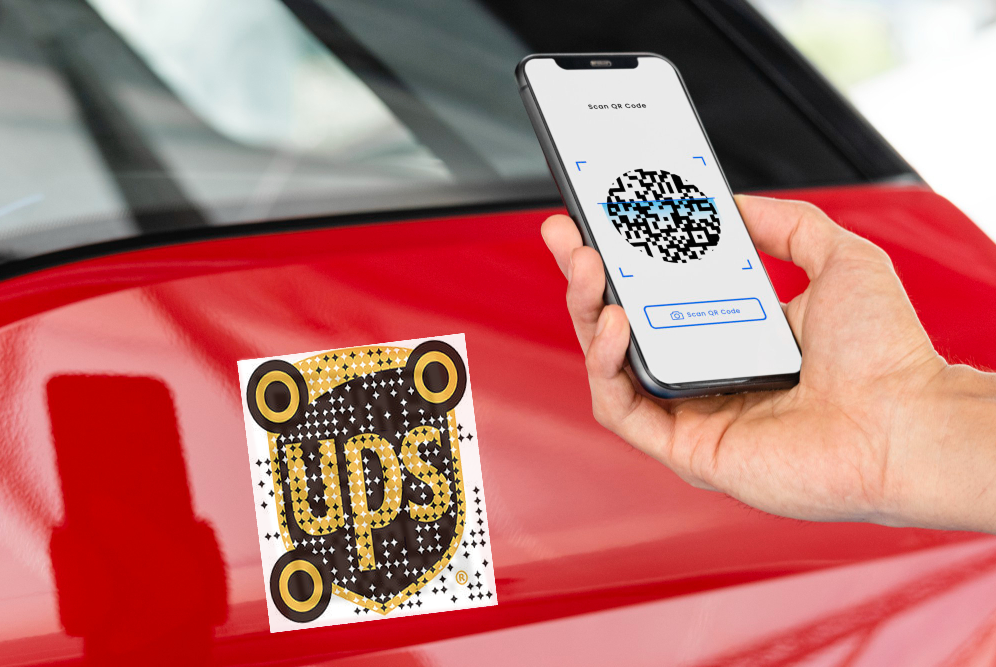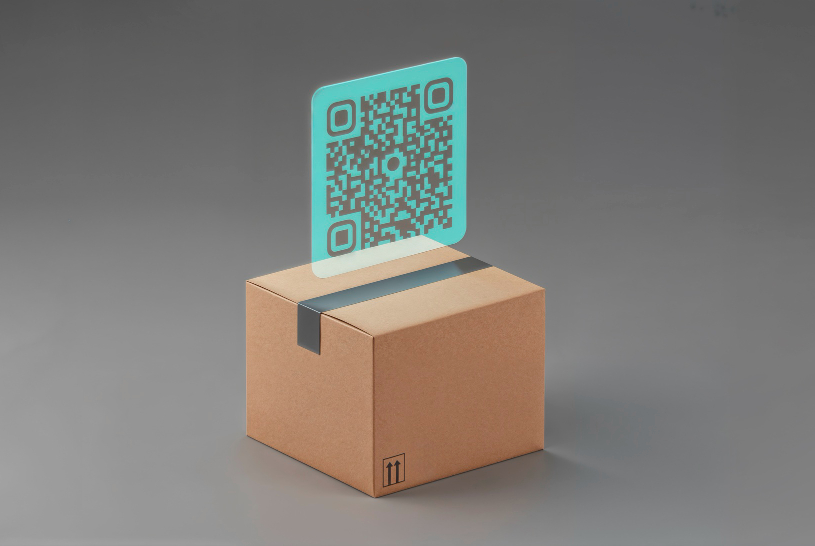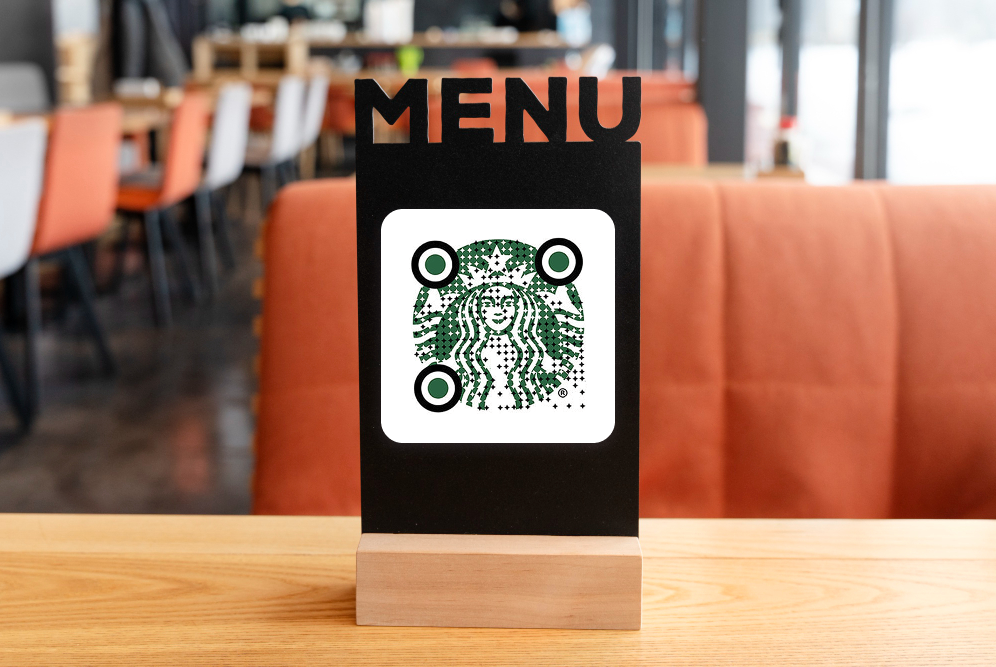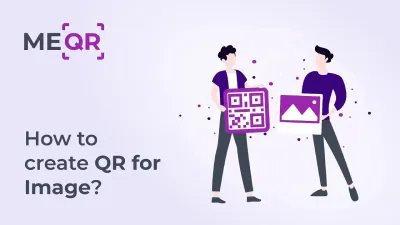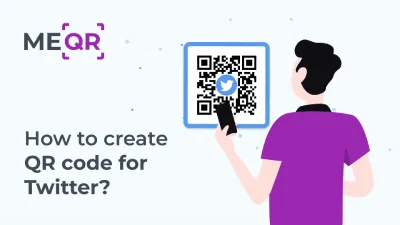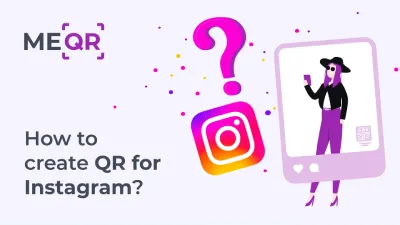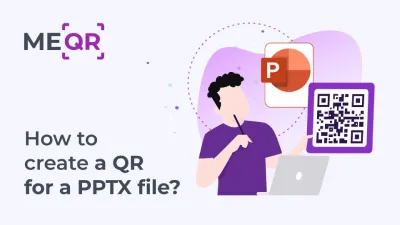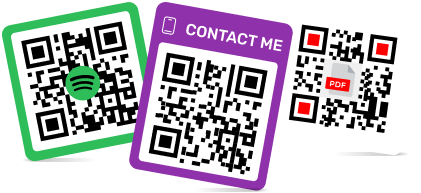Codice QR sulle lapidi: Conservare i ricordi in modo digitale
Per creare un codice QR per un link, un video o un'immagine, clicca sul pulsante qui sotto.

Il modo in cui ricordiamo e onoriamo i nostri cari defunti si è evoluto in modo significativo nel corso dei secoli. Dai semplici marcatori in pietra ai monumenti intricati, i metodi che utilizziamo per commemorare si sono continuamente adattati ai cambiamenti culturali e tecnologici.
Negli ultimi anni è emersa una tendenza crescente che fonde le tradizionali lapidi con la tecnologia digitale: l'uso dei codici QR. Questo articolo esplora il concetto di codice QR per una lapide, fornendo uno sguardo approfondito alla sua storia, ai suoi vantaggi, alla sua implementazione e alle sue implicazioni future.
L'evoluzione delle lapidi tombali
Le lapidi funerarie hanno una storia lunga e variegata, che riflette il contesto culturale e tecnologico del loro tempo.

Segnali antichi
Le prime lapidi tombali erano semplici pietre o croci di legno, che servivano principalmente a contrassegnare il luogo di sepoltura. Queste lapidi spesso non avevano iscrizioni dettagliate o disegni artistici e venivano utilizzate per indicare la posizione della tomba piuttosto che per fornire informazioni sul defunto.

Medioevo e Rinascimento
Durante il Medioevo e il Rinascimento, le lapidi divennero più elaborate. Lapidi e tombe presentavano incisioni intricate, simboli religiosi ed epitaffi dettagliati. Anche i materiali utilizzati si evolsero, con marmo e granito che divennero scelte popolari per la loro durevolezza e il loro fascino estetico. Queste lapidi spesso includevano immagini religiose, che riflettevano le credenze culturali e spirituali dominanti dell'epoca.

Sviluppi moderni
Il XIX e il XX secolo introdussero lapidi prodotte in serie e l'uso di materiali durevoli come granito e marmo. La personalizzazione divenne più comune, con immagini incise e iscrizioni dettagliate. La rivoluzione industriale e i progressi della tecnologia consentirono disegni più intricati e la diffusa disponibilità di lapidi tombali.
Oggi, l'integrazione della tecnologia digitale rappresenta l'ultima evoluzione nelle pratiche di commemorazione. Questo cambiamento riflette tendenze più ampie nella società verso la digitalizzazione e la crescente importanza di Internet nella vita quotidiana.
L'ascesa della lapide digitale
I memoriali digitali sono diventati sempre più popolari, offrendo nuovi modi per ricordare e celebrare la vita dei propri cari. Questi tributi digitali integrano le pratiche tradizionali offrendo nuove funzionalità e opzioni di accessibilità.
Caratteristiche delle lapidi digitali
I memoriali digitali offrono diverse funzionalità chiave che migliorano i modi tradizionali di onorare i propri cari:
-
Pagine commemorative online: siti web e pagine social media dedicate alla condivisione di ricordi, immagini e storie. Queste pagine possono essere personalizzate e aggiornate nel tempo, consentendo un tributo dinamico e in continua evoluzione.
-
Cimiteri virtuali: spazi digitali in cui le persone possono visitare e rendere omaggio ai defunti da qualsiasi parte del mondo. I cimiteri virtuali spesso includono funzionalità interattive, come la possibilità di lasciare fiori o messaggi virtuali.
-
Funzionalità interattive: la possibilità di lasciare fiori, candele o messaggi virtuali. Queste funzionalità migliorano l'esperienza commemorativa tradizionale consentendo un coinvolgimento e un'interazione continui.
Queste caratteristiche dei memoriali digitali offrono un modo per mantenere vivi i ricordi in modo interattivo e coinvolgente, rendendo l'esperienza del ricordare i propri cari più accessibile e personale.

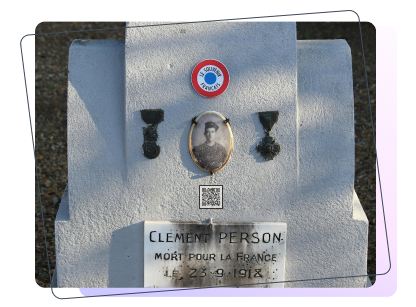
Accessibilità del QR Code Tombstone
L'integrazione dei codici QR per le lapidi è un'estensione naturale di questa tendenza, che collega i regni fisico e digitale. Fornendo un collegamento diretto al contenuto digitale, i codici QR migliorano l'esperienza commemorativa tradizionale e consentono un tributo più completo e interattivo.
Cosa sono i codici QR?
Per comprendere il ruolo dei codici QR nei memoriali digitali, è essenziale comprenderne le funzionalità di base e la rilevanza.
Comprendere i codici QR
I codici QR (Quick Response) sono un tipo di codice a barre a matrice, o codice a barre bidimensionale, sviluppato dalla società giapponese Denso Wave nel 1994. A differenza dei codici a barre tradizionali che memorizzano i dati in modo lineare, i codici QR possono contenere molte più informazioni e possono essere scansionati da qualsiasi direzione, il che li rende estremamente versatili.
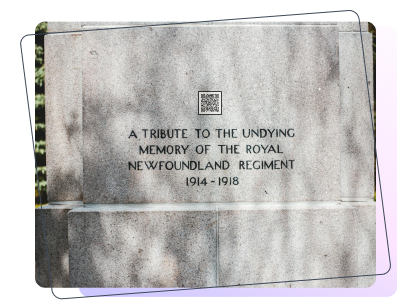
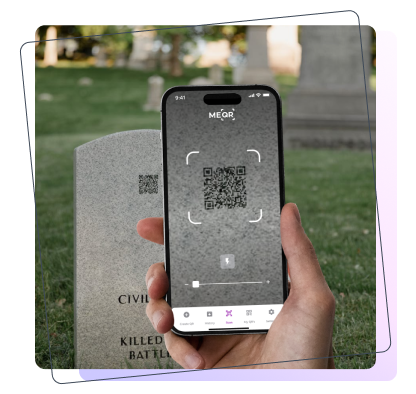
Come funzionano i codici QR?
I codici QR sono composti da quadrati neri disposti su uno sfondo bianco. Possono essere scansionati tramite smartphone o lettori di codici QR , che interpretano i dati codificati e indirizzano l'utente a contenuti digitali come URL , video o testo . Questa semplicità e facilità d'uso rendono i codici QR uno strumento ideale per varie applicazioni, tra cui i memoriali digitali.
Quando un codice QR viene scansionato, la fotocamera del dispositivo cattura l'immagine e la elabora con un software specializzato. Il software decodifica il pattern di quadrati e lo traduce in un formato leggibile, come PNG o Google Doc . Questo processo è rapido ed efficiente, consentendo agli utenti di accedere ai contenuti digitali quasi istantaneamente.
Codici QR sulle lapidi
L'idea di integrare il codice QR su una lapide ha preso piede come metodo per arricchire i monumenti commemorativi tradizionali con contenuti digitali.
Il concetto di lapidi QR
Le lapidi digitali incorporano codici QR incisi o apposti su lapidi tradizionali. Quando vengono scansionati, questi codici QR possono indirizzare i visitatori a una pagina commemorativa online personalizzata, offrendo un'esperienza più ricca e interattiva rispetto a una semplice iscrizione convenzionale.
Le lapidi digitali fondono il mondo fisico e quello digitale, offrendo un modo completo e dinamico per ricordare e onorare il defunto. Collegandosi al contenuto digitale, i codici QR consentono aggiornamenti e coinvolgimento continui, assicurando che il memoriale rimanga rilevante e significativo nel tempo.

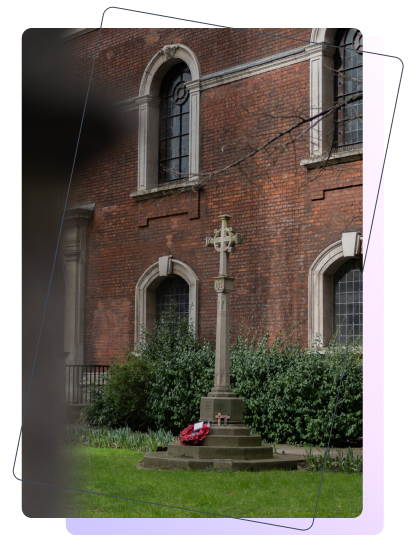
Vantaggi del codice QR della lapide
I vantaggi dell'utilizzo del codice QR sulla lapide sono molteplici:
-
Informazioni estese: i codici QR possono collegarsi a biografie dettagliate, gallerie fotografiche e file , offrendo una visione più completa della vita del defunto. Queste informazioni possono essere aggiornate continuamente, assicurando che il memoriale rimanga attuale e pertinente.
-
Coinvolgimento interattivo: i visitatori possono lasciare messaggi, condividere ricordi e interagire con contenuti digitali, creando un memoriale dinamico. Questa interattività migliora l'esperienza tradizionale del memoriale e consente un coinvolgimento e una connessione continui.
-
Conservazione dei ricordi: i contenuti digitali collegati ai codici QR possono essere aggiornati e mantenuti nel tempo, assicurando che i ricordi siano preservati per le generazioni future. Questa longevità assicura che l'eredità del defunto rimanga accessibile e significativa.
Questi vantaggi dimostrano come la lapide con codice QR possa trasformare il modo in cui commemoriamo e ricordiamo i nostri cari, rendendo l'esperienza più coinvolgente e duratura.
Come implementare un codice QR su Tombstone?
La creazione e l'inserimento di un codice QR per le lapidi comporta diversi passaggi pratici.
Fase uno: scelta del generatore di codici QR giusto
Selezionare un generatore di codici QR affidabile è fondamentale. Uno di questi generatori è ME-QR, che offre varie funzionalità su misura per soddisfare le esigenze degli utenti che desiderano creare memoriali digitali. Quando si sceglie un generatore di codici QR , considerare i seguenti fattori:
-
Capacità dei dati: assicurati che il generatore possa gestire la quantità di informazioni che vuoi codificare. Il codice QR dovrebbe essere in grado di memorizzare tutti i dati necessari senza compromettere la leggibilità o la funzionalità.
-
Personalizzazione: cerca opzioni per personalizzare il design e il colore del codice QR in modo che corrispondano alla lapide. La personalizzazione può migliorare l'aspetto estetico e garantire che il codice QR si fonda perfettamente con la lapide.
-
Affidabilità: scegli un generatore con una buona reputazione e recensioni positive per garantire che il codice QR rimanga funzionale nel tempo. L'affidabilità è essenziale per garantire che il codice QR rimanga scansionabile e il contenuto collegato accessibile.
Scegliere il generatore di codici QR giusto è il primo passo per garantire che il ricordo digitale sia efficace e duraturo.


Fase due: creazione e incorporamento di codici QR
Per creare e incorporare una targa con codice QR, segui questi passaggi:
-
Genera il codice QR: usa un generatore di codici QR come ME-QR per creare il codice, collegandolo al contenuto digitale desiderato. Assicurati che il codice QR sia ad alta risoluzione e facilmente scansionabile.
-
Selezionare la posizione: decidi dove sulla lapide verrà posizionato il codice QR. Considera la visibilità e l'accessibilità per i visitatori. Il codice QR deve essere facilmente raggiungibile e visibile, assicurando che i visitatori possano scansionarlo senza difficoltà.
-
Incidere o apporre il codice QR: lavorare con un professionista per incidere il codice QR direttamente sul pennarello o utilizzare una targa durevole e resistente alle intemperie. Il codice QR deve essere durevole e resistente ai fattori ambientali per garantirne la longevità.
Seguendo questi passaggi, è possibile implementare efficacemente la targa QR sulle lapidi, creando un collegamento digitale che valorizza i monumenti commemorativi tradizionali.
Fase tre: manutenzione e aggiornamento dei codici QR
È essenziale garantire la longevità e la pertinenza dei codici QR sulle lapidi:
-
Controlli regolari: scansiona periodicamente il codice QR per assicurarti che sia ancora funzionante e che il contenuto collegato sia accessibile. Una manutenzione regolare assicura che il codice QR rimanga scansionabile e il contenuto pertinente.
-
Aggiornamenti dei contenuti: mantieni aggiornati i contenuti digitali, aggiungendo nuovi ricordi, foto o messaggi a seconda delle necessità. Gli aggiornamenti continui assicurano che il memoriale rimanga rilevante e significativo.
La manutenzione e l'aggiornamento dei codici QR garantiscono che il memoriale digitale continui a svolgere efficacemente il suo scopo nel tempo.

Esempi e casi di studio di codici QR per lapidi
Esempi e casi di studio illustrano l'impatto e l'efficacia dei memoriali QR.

Esempi notevoli di un codice QR per lapidi
Diversi esempi notevoli dimostrano il potenziale dei codici QR in un cimitero per migliorare i memoriali tradizionali:
-
Tomba di Jim Morrison: un codice QR sulla tomba del famoso musicista a Parigi rimanda a un memoriale virtuale con il suo l'audio , la sua biografia e i messaggi dei fan. Questo tributo digitale offre ai fan un modo completo e interattivo per ricordare e onorare Morrison.
-
Memoriali innovativi in Giappone: diversi cimiteri in Giappone hanno adottato i codici QR per fornire ai visitatori storie dettagliate di personaggi illustri. Questi memoriali digitali migliorano l'esperienza tradizionale del cimitero offrendo contenuti ricchi e interattivi.
Questi esempi mostrano come i codici QR possano trasformare le lapidi in monumenti commemorativi dinamici e interattivi, che creano un legame più profondo con il defunto.
Storie di successo di famiglie sulla lapide QR
Le famiglie che hanno utilizzato una lapide digitale condividono esperienze positive:
-
La famiglia Thompson: dopo aver perso l'amata nonna, la famiglia Thompson ha aggiunto un codice QR alla sua lapide, collegandosi a un album digitale pieno di loghi , ricette e storie. Questo tributo digitale è diventato una risorsa preziosa per i membri della famiglia.
-
La famiglia Lee: la famiglia Lee ha utilizzato un codice QR sulla lapide del padre per collegarsi a un sito Web in cui amici e familiari potevano condividere SMS con ricordi e caricare foto. La natura interattiva del memoriale ha avvicinato la famiglia.
Queste storie di successo evidenziano l'impatto personale che i codici QR possono avere sulla commemorazione, rendendo l'esperienza più significativa per familiari e amici.

Codice QR Grave: considerazioni etiche e sulla privacy
Sebbene l'integrazione della tecnologia digitale nei memoriali offra numerosi vantaggi, solleva anche importanti questioni etiche e di privacy.

Rispetto della privacy nella lapide con codice QR
La privacy è fondamentale quando si creano memoriali digitali. Considerate queste linee guida:
-
Consenso: assicurati che tutti i contenuti collegati al codice QR siano condivisi con il consenso della famiglia del defunto e rispettino i suoi desideri. Ottenere il consenso è essenziale per garantire che il memoriale digitale rispetti la privacy del defunto e della sua famiglia.
-
Impostazioni sulla privacy: usa le impostazioni sulla privacy per controllare chi può accedere e interagire con i contenuti digitali. Le impostazioni sulla privacy assicurano che solo gli individui autorizzati possano visualizzare e interagire con il memoriale digitale.
Rispettare la privacy nei memoriali digitali garantisce che il contenuto digitale rimanga rispettoso e sicuro.
Gestione dei contenuti digitali
Una corretta gestione dei contenuti digitali è essenziale per preservare l'integrità e la sicurezza della lapide QR:
-
Hosting sicuro: scegli una piattaforma di hosting sicura per i contenuti digitali per impedire l'accesso non autorizzato. L'hosting sicuro assicura che i contenuti digitali rimangano protetti da accessi non autorizzati e manomissioni.
-
Aggiornamenti regolari: mantieni il contenuto attuale e monitora eventuali interazioni inappropriate o dannose. Aggiornamenti e monitoraggio regolari assicurano che il memoriale digitale rimanga pertinente e rispettoso.
Una gestione efficace dei contenuti digitali contribuisce a preservare la sicurezza e la pertinenza del memoriale digitale nel tempo.

Il futuro delle lapidi virtuali
Il futuro dei memoriali digitali appare promettente, con potenziale per ulteriori progressi tecnologici e cambiamenti culturali.

Innovazioni nella tecnologia delle lapidi virtuali
È probabile che le tecnologie emergenti migliorino ulteriormente i memoriali digitali:
-
Realtà aumentata (AR): l'AR potrebbe consentire ai visitatori di visualizzare tributi digitali sovrapposti a lapidi fisiche. Questa tecnologia potrebbe fornire un'esperienza commemorativa più immersiva e interattiva.
-
Intelligenza artificiale (IA): l'IA potrebbe aiutare a creare memoriali digitali personalizzati e interattivi, rispondere alle domande dei visitatori o generare contenuti basati sui dati della vita del defunto. La tecnologia dell'IA potrebbe migliorare la personalizzazione e l'interattività dei memoriali digitali.
Queste innovazioni hanno il potenziale di cambiare in modo significativo il modo in cui interagiamo con i nostri cari e li ricordiamo attraverso memorie digitali.
Implicazioni a lungo termine
L'impatto a lungo termine dei memoriali digitali sulle pratiche culturali e sociali include:
-
Cambiamento delle pratiche commemorative: i memoriali digitali potrebbero diventare un complemento standard alle pratiche tradizionali, offrendo modi più personalizzati e dinamici per onorare il defunto. Questo cambiamento potrebbe portare a esperienze commemorative più significative e interattive.
-
Adattamento culturale: culture diverse integreranno i memoriali digitali in modi unici, riflettendo le loro tradizioni e i tassi di adozione tecnologica. L'adozione dei memoriali digitali varierà in base alle norme culturali e ai progressi tecnologici.
Il futuro dei memoriali digitali promette un approccio più personalizzato, interattivo e culturalmente adattabile per ricordare e onorare i propri cari.


Conclusione

